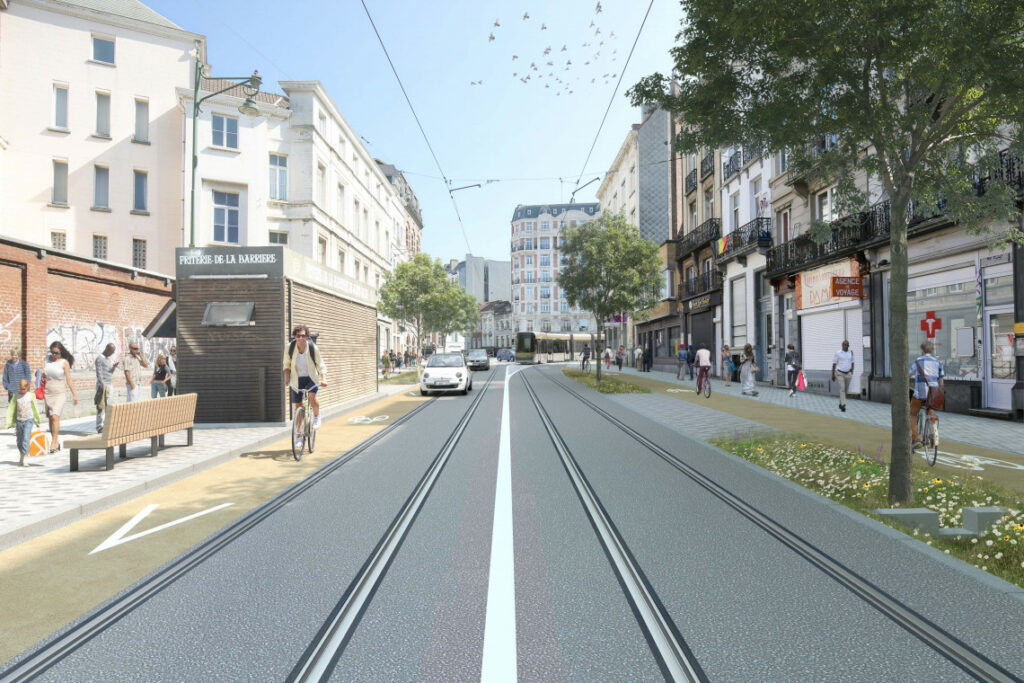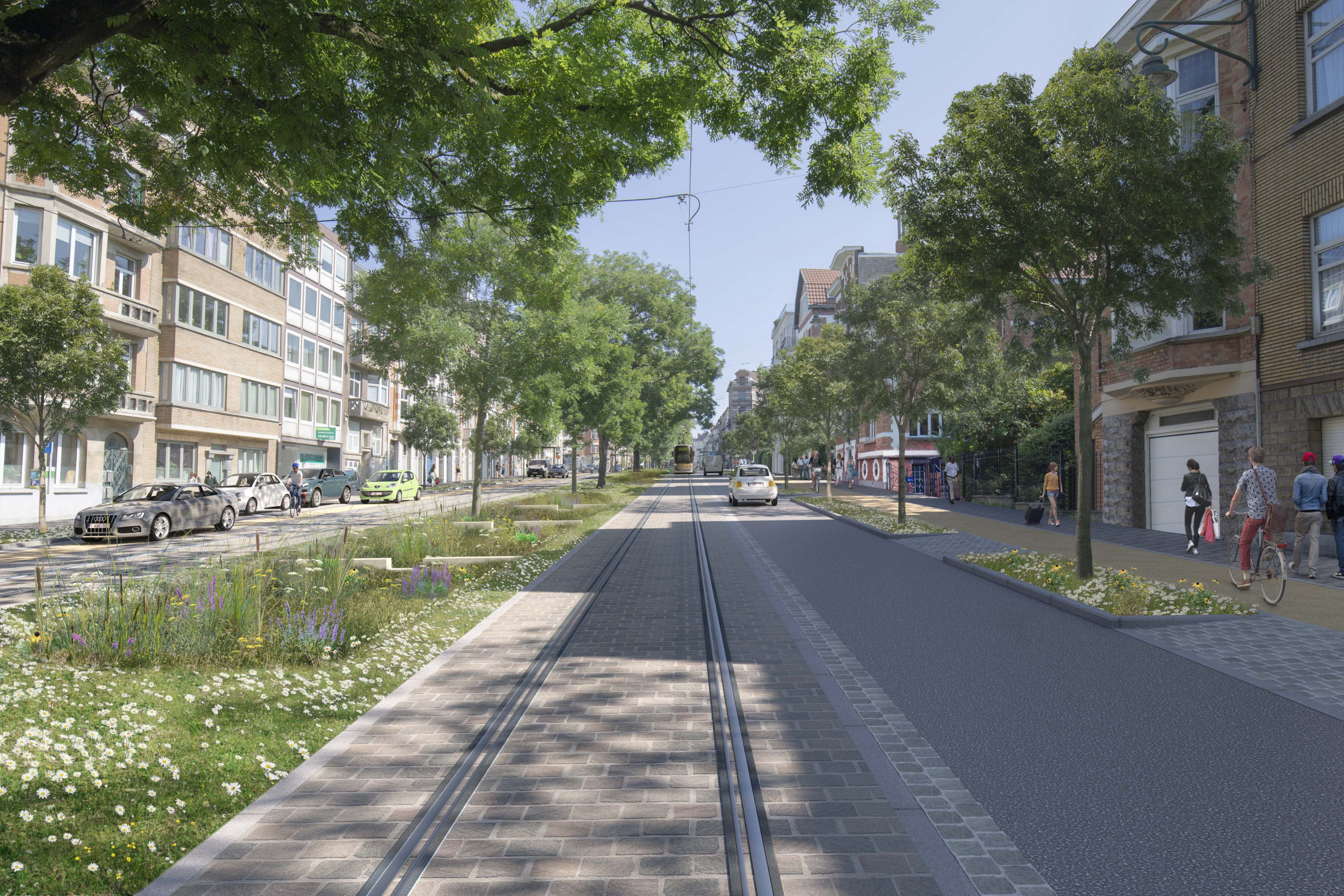Brussels is one step closer to redeveloping the Barrière in Saint-Gilles and the area around it, as Brussels Mobility has received the urban development permit required to start the works, announced Brussels State Secretary for Urban Planning Ans Persoons.
The aim is to make the traffic-heavy area around the roundabout in the centre of Saint-Gilles safer and more comfortable for pedestrians, cyclists and people with reduced mobility: the public space will be designed more pleasantly, the tram tracks will be renewed, rainwater will be able to seep into the soil better and new trees will be planted.
"We continue to work on a city tailor-made for everyone and this project fits completely within this philosophy," said Persoons. "Avenue du Parc has lost much of its stately character over the years. We are now going to restore that by providing plenty of space for pedestrians and cyclists and additional trees."
More comfort and safety
"For a long time, the Barrière of Saint-Gilles was one of the darkest, most dangerous points in Brussels. We are now tackling this: the Barrière is being thoroughly redesigned into an intersection with fewer traffic flows and conflicts, more comfort and safety for pedestrians and cyclists, and smoother public transport," said Brussels Mobility Minister Elke Van den Brandt.
The Avenue du Parc – which connects the Barrière with the Place de Rochefort – will be renovated with high-quality infrastructure for pedestrians and cyclists, "but also beautiful materials, ambitious greening and integrated rainwater management," she added.
It will retain its historic, symmetrical character with a green central reservation for the tram, and special attention will also be paid to the infiltration of rainwater into the soil. On the outside of the roadways, rows of trees will be provided along the new wider sidewalks.
Infrastructure for cyclists will be installed along the entire length of the lane, with separate cycle paths uphill between Place de Rochefort and Avenue Clémentine, and downhill when approaching Rochefort in the bottleneck near Barrière.

The redesigned Avenue du Parc in Saint-Gilles. Credit: Brussels Mobility
The other parts of Avenue du Parc will be designed as a bicycle street, where cyclists will share the lane with cars (which are not allowed to overtake them). The last part of the street will become a one-way street for car traffic, in the direction of Rochefort: this guarantees a quality cycling experience in a car-free street.
"Forest is happy that this road, where many accidents occur, is being renovated. It will become safer for all users, with separate cycle paths, but also with better water management thanks to rain gardens, more greenery and ultimately a guaranteed commercial frequency for STIB," said Forest Mayor Mariam El Hamidine, adding that the project will be "adapted to the challenges of the 21st century."
As part of the implementation of the plan to decolonise the public space, the monument of Lieutenant General Baron Tombeur de Tabora will be removed. "Monuments like this no longer have a place in the public space without context," Persoons said. In the future, it will be placed at a location where various colonial monuments are brought together and contextualised.
Additionally, the tram tracks will be renewed along the entire length of Avenue du Parc and public transport stops are being redesigned to ensure optimal accessibility.

Avenue du Parc. Credit: Brussels Mobility
The Barrière itself will be completely redesigned according to the different traffic flows: the tram will no longer drive around, but across the square. Several streets that lead to the Barrière will become one-way streets (with an exception for public transport).
The pavements will be widened, while the roadway will be narrowed so that two cars cannot drive side by side – one of the main causes of accidents. The planned improvements will strengthen the roundabout and clarify the associated priority rules.
"The Parc-Barrière project will help improve the quality of public space in Saint-Gilles, creating more comfort for users and residents," said Saint-Gilles Mayor Jean Spinette. "The Barrière, a crucial hub for mobility in the municipality, will undergo an important qualitative improvement area of greenery and pedestrian crossings."

